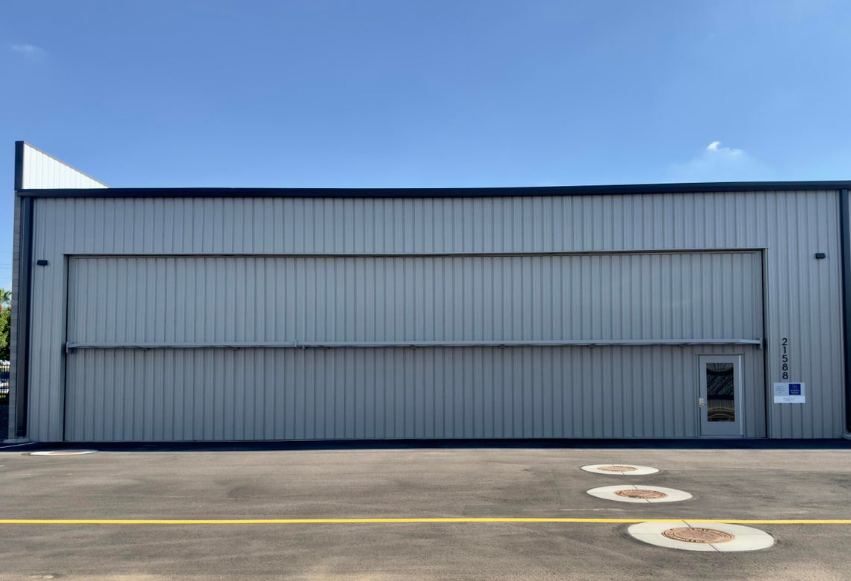Understanding the Basics of Aviation Properties
- Aviation Real Estate Magazine

- May 10, 2023
- 4 min read
Aviation properties represent a unique and specialized segment of real estate. These properties are designed to support aviation activities, including aircraft storage, maintenance, and operations. Whether you are an investor, pilot, or aviation enthusiast, understanding the basics of aviation properties can help you make informed decisions. This article explores the key aspects of aviation properties, their types, and practical considerations for ownership and investment.
Exploring Aviation Properties: Types and Uses
Aviation properties come in various forms, each serving a specific purpose within the aviation industry. The most common types include:
Hangars: Structures designed to house aircraft, protecting them from weather and providing space for maintenance.
Airports and Airfields: Land areas equipped with runways and facilities for aircraft takeoff, landing, and parking.
Maintenance Facilities: Specialized buildings where aircraft repairs and inspections are conducted.
Fuel Stations: Locations dedicated to refueling aircraft. Normally 100ll and Jet A
Office Spaces: Administrative buildings for aviation businesses and operations.
Each type of aviation property has unique features and requirements. For example, hangars must have large doors and sufficient height to accommodate different aircraft sizes. Airports require extensive land and infrastructure, including runways, taxiways, and lighting systems.
Understanding these types helps potential buyers or investors identify which aviation property suits their needs best.

Aircraft hangars provide essential shelter and maintenance space for planes.
Key Features of Aviation Properties
When evaluating aviation properties, several critical features should be considered:
Location: Proximity to major airports, air traffic routes, and urban centers can significantly impact the property's value and usability.
Zoning and Regulations: Aviation properties are subject to strict zoning laws and aviation regulations. Compliance with the Federal Aviation Administration (FAA) or local aviation authorities is mandatory.
Infrastructure: Adequate runway access, taxiways, lighting, and security systems are essential for operational efficiency.
Size and Layout: The property must accommodate the size and number of aircraft intended to be housed or serviced.
Utilities and Services: Availability of electricity, water, fuel, and waste disposal services is crucial for daily operations.
For example, a hangar located near a busy airport with easy runway access and modern utilities will be more attractive to potential tenants or buyers.

Runway access and nearby hangars are vital features of aviation properties.
What is an aviation property?
An aviation property is a real estate asset specifically designed or adapted for aviation-related activities. These properties support the operation, storage, maintenance, and management of aircraft. Unlike traditional real estate, aviation properties must meet specialized criteria to accommodate the unique needs of aircraft and aviation businesses.
Examples of aviation properties include:
Private hangars for individual aircraft owners.
Commercial hangars leased to aviation companies.
Fixed Base Operator (FBO) facilities offering services like fueling, maintenance, and passenger lounges.
Airports and heliports serving public or private aviation needs.
The value of aviation properties often depends on their location relative to airports and air traffic corridors, as well as the quality of their infrastructure.

Private hangars provide secure storage for individual aircraft owners.
Practical Tips for Investing in Aviation Properties
Investing in aviation properties requires careful planning and knowledge of the aviation industry. Here are some actionable recommendations:
Research Local Aviation Markets: Understand the demand for hangars, maintenance facilities, and other aviation services in the area.
Check Regulatory Compliance: Ensure the property complies with all aviation and zoning regulations to avoid legal issues.
Evaluate Infrastructure Quality: Inspect runways, taxiways, lighting, and utilities to assess operational readiness.
Consider Long-Term Maintenance Costs: Aviation properties often require specialized upkeep, which can be costly.
Leverage Professional Expertise: Work with brokers and consultants who specialize in aviation real estate to find suitable properties and navigate complex transactions.
For example, an investor interested in leasing hangar space should analyze local airport traffic and existing hangar occupancy rates to estimate potential rental income.
Future Trends in Aviation Properties
The aviation industry is evolving rapidly, and so are the demands on aviation properties. Some emerging trends include:
Sustainability Initiatives: Incorporating green technologies such as solar panels and energy-efficient lighting in hangars and facilities.
Electric Aircraft Infrastructure: Preparing properties to support electric and hybrid aircraft, including charging stations.
Increased Demand for Private Aviation: Growth in private and business aviation is driving demand for personalized hangars and exclusive facilities.
Technological Integration: Use of smart building systems for security, climate control, and maintenance monitoring.
Staying informed about these trends can help property owners and investors maximize the value and functionality of their aviation assets.
Understanding aviation properties is essential for anyone involved in the aviation sector or interested in specialized real estate investments. By recognizing the types, features, and practical considerations, you can make better decisions and capitalize on opportunities in this niche market. Whether you are looking to buy, lease, or develop aviation properties, thorough research and expert guidance are key to success.



